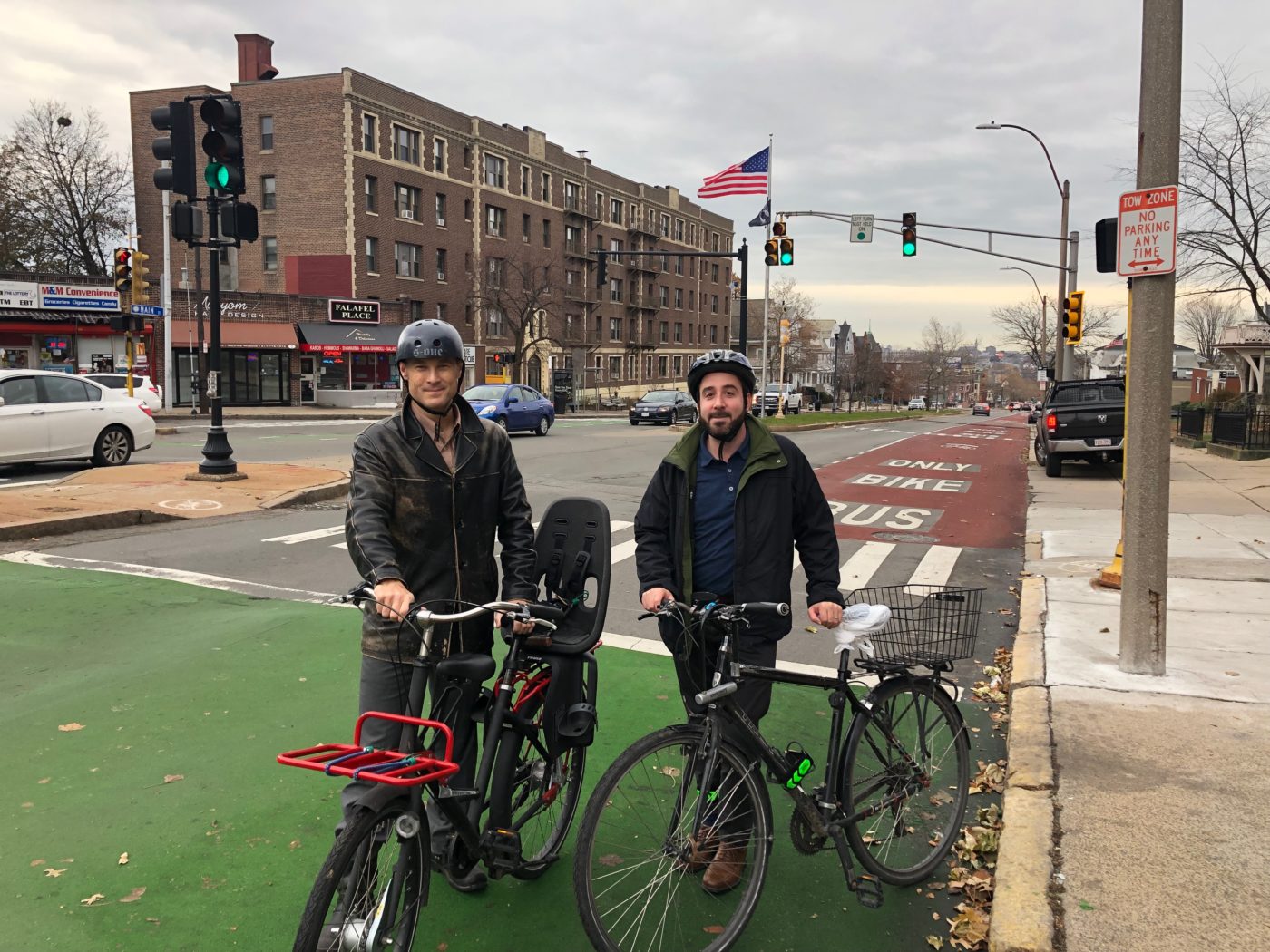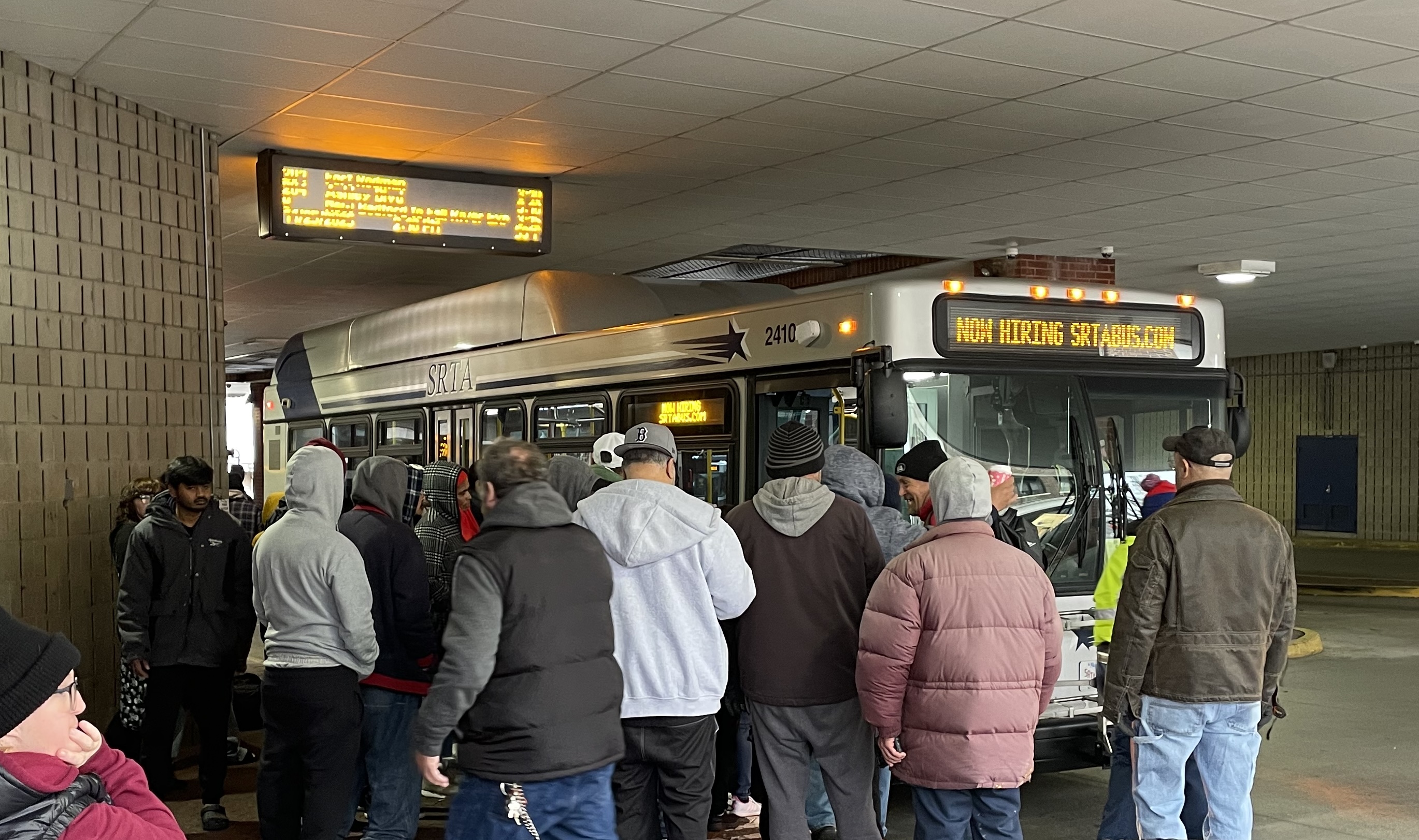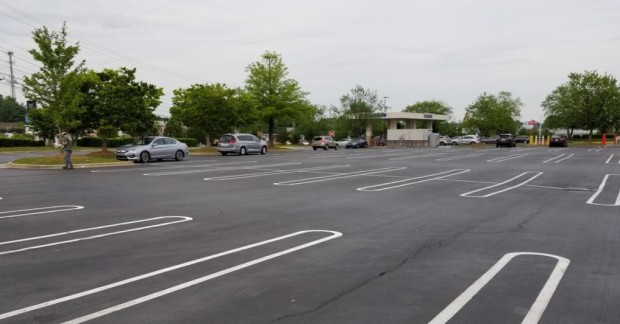Since new all-day bus lanes were installed on Broadway this summer, bus ridership and speeds have improved and fewer people are driving cars through the Winter Hill neighborhood, according to data presented to the Somerville City Council Monday evening.
This fall, Somerville implemented its “Winter Hill In Motion” plan, which set aside dedicated bus lanes on Broadway in both directions, plus several new segments of protected bike lanes. The project has also consolidated bus stops and reprogrammed traffic lights to prioritize buses at intersections.
"What we had heard is that people are sick and tired of having their bus come only on time 60 percent of the time, they're tired of unpredictable waits," said Brad Rawson, City of Somerville's Director of Transportation, in a presentation of traffic data from before and after the new bus lanes were implemented in September. "The City of Somerville has great control over how frequently buses can actually meet their on-time performance goals."
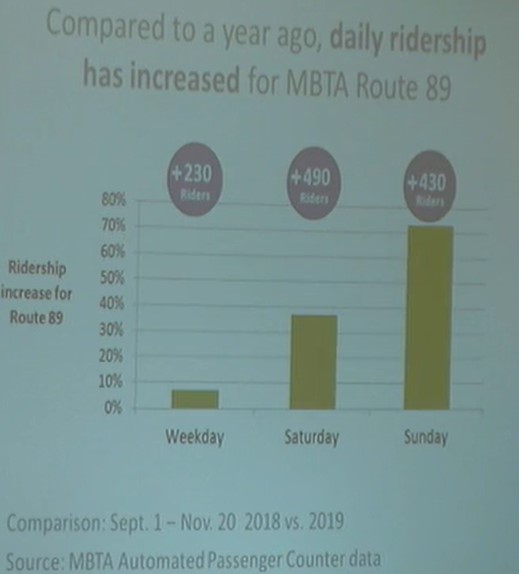
To support the city's investment in bus infrastructure, the MBTA in September adjusted Broadway's route 89 bus schedule to add 10 additional bus trips on weekdays, 26 additional trips on Saturdays and 24 additional trips on Sundays. Increased ridership has followed: compared to fall 2018, there were 230 more weekday riders after the bus lanes went in, and over 400 more daily riders on weekends, according to the MBTA's automated passenger counts.
"The buses are coming more frequently, and that would not have happened without the conversations that we've been having about the municipalities' role in speeding up these buses," said Rawson.
The MBTA's bus GPS data also indicate that buses are travelling faster through the corridor, saving an average of 60 seconds during the morning rush hour on the half mile from Main Street to the McGrath Highway (typically a 3 minute trip), and about 30 seconds per bus trip at other times.
Over the course of a day, a 30-second reduction in the average bus trip adds up to over 64 hours saved for the Broadway corridor's 7,700 weekday bus riders.
Rawson also shared data from automated recording devices that showed that motor vehicle traffic volumes are down dramatically throughout the corridor. Near Magoun Square in the western portion of the corridor, there are 4,500 fewer cars using Broadway on a daily basis this fall compared to November 2014, the last time traffic volumes were counted in the area.
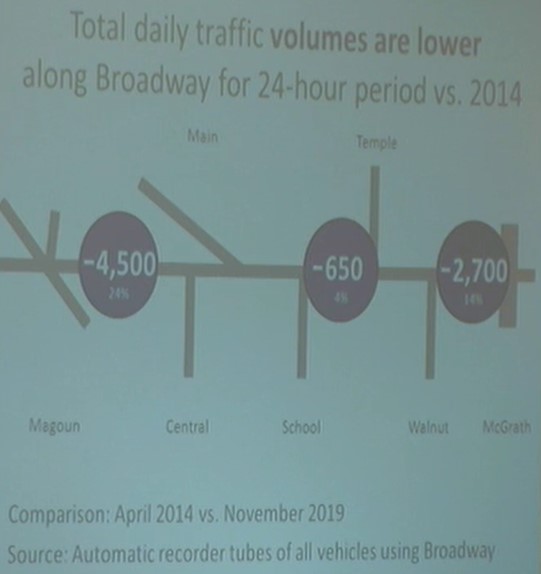
And although there was a spike in congestion and motor vehicle travel times along Broadway in September, when the bus lanes were first implemented, Rawson attributed those problems to the fact that Broadway's traffic signals weren't adjusted to the new traffic patterns until mid-October.
Since that adjustment was made, the data show that private cars now take roughly the same amount of time to traverse Broadway as they did before the bus lanes were established.
Melissa Dullea, the MBTA's Senior Director of Service Planning and a Somerville resident, followed Rawson's presentation to discuss the potential for additional bus service on the 89 and 101 bus routes.
"The Broadway bus and bike lanes are a fantastic example of how municipalities can partner with the MBTA to create a virtuous cycle of how investments in roadway infrastructure can improve the transit experience, attract new riders, and result in further transit investments and better frequencies so that mobility for an area can be improved," said Dullea. "Somerville should be proud to set a new example for two-way, all-day bus lanes and show what is possible with bold vision."
At Monday's MBTA Fiscal and Management Control Board meeting, Caroline Vanasse, a planner from the T's "Better Bus Project," presented four short-term demonstration projects that could add new bus services on key routes with high ridership potential, including a proposal to add more service to the two Broadway corridors in Somerville and Everett:
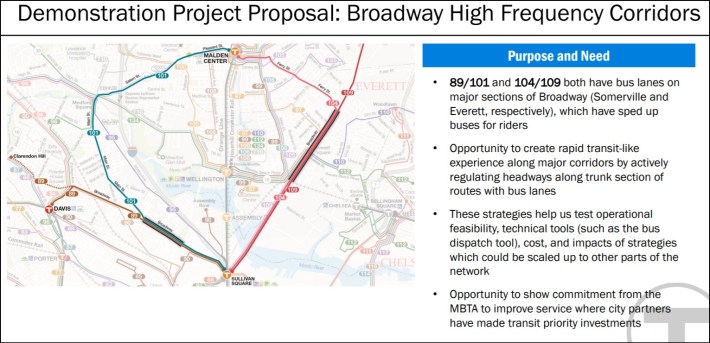
One of the demonstration projects would increase bus frequencies on Somerville's Broadway as well as the bus lane on Broadway in Everett, such that the 89 and 101 in Somerville and the 104 and 109 in Everett would run every 10 minutes along the two Broadways during rush hours, and every 15-20 minutes at other times.
In her presentation to the board, Caroline Vanasse, said that additional off-peak service on the Broadways could be added to the schedule in the summer or fall of 2020, with additions to peak-hour service added in 2021 when new buses from an expanded MBTA bus fleet are expected to become available.
